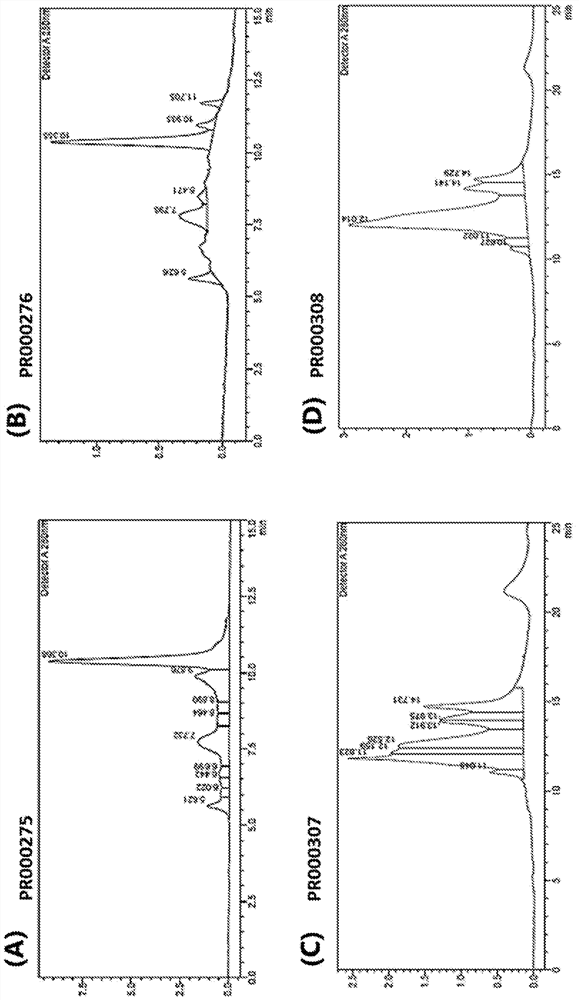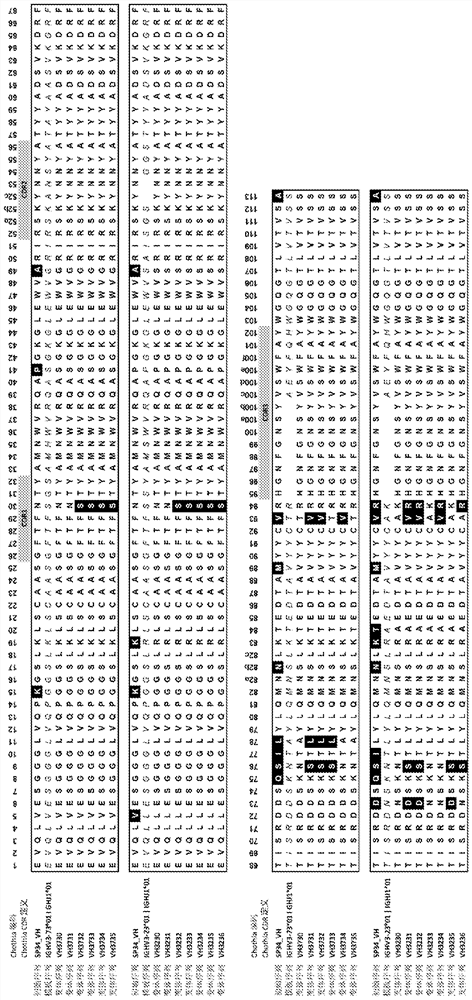Antibodies targeting cd3, bispecific antibodies and uses thereof
A bispecific antibody, antibody technology, applied in the direction of antibody, antibody mimic/scaffold, anti-receptor/cell surface antigen/cell surface determinant immunoglobulin, etc. , difficult to contact the tumor and other problems, to achieve the effect of stabilizing the binding ability of T cells, possessing the binding ability of T cells, and reducing the release level
- Summary
- Abstract
- Description
- Claims
- Application Information
AI Technical Summary
Problems solved by technology
Method used
Image
Examples
Embodiment 1
[0096] Preparation and characterization analysis of embodiment 1 recombinant antibody
[0097] 1.1 Preparation of IgG recombinant antibody
[0098] After obtaining the light and heavy chain variable domain sequences encoding antibody molecules, conventional recombinant DNA technology can be used to combine the light and heavy chain variable domain sequences with the corresponding human antibody light and heavy chain constant domain sequences Perform fusion expression to obtain recombinant antibody molecules. In this example, the antibody heavy chain variable domain sequence (VH) was genetically synthesized and cloned into a mammalian cell expression plasmid vector encoding the human IgG1 antibody heavy chain constant domain sequence to encode the full-length IgG1 antibody. heavy chain, and the "LALA" double mutant (L234A / L235A) (SEQ ID NO: 63) or the "LALAPG" triple mutant (L234A / L235A / P329G) (SEQ ID NO: 64) was introduced into the IgG1 heavy chain constant region To reduce ...
Embodiment 2
[0107] Example 2 Recombinant expression of mouse-human chimeric antibody of CD3 antibody SP34
[0108] SP34 is an anti-human CD3e antibody derived from mice, which can bind to a variety of primate CD3 and has the function of activating T cells. The variable region sequences VH and VL of SP34 have been disclosed in WO2016071004A1. In this application, the amino acid sequence of the VH of SP34 is SEQ ID NO: 42, and its corresponding mouse germline V gene is IGHV10-1; the amino acid sequence of the VL of SP34 is SEQ ID NO: 56, and its corresponding mouse The germline V gene is IGLV1. In this example, the VH sequence of SP34 was fused with the human IgG1 antibody heavy chain constant domain sequence (SEQ ID NO: 63) comprising the "LALA" double mutant (L234A / L235A) to generate SP34 mouse-human chimeric The full-length heavy chain of an IgG1 antibody; the amino acid sequence of the VL of SP34 was fused to the constant domain sequence of the human antibody lambda light chain (SEQ I...
Embodiment 3
[0112] Example 3 Convert CD3 Antibody SP34 Mouse Antibody to Recombinant scFv Antibody
[0113] The VH sequence (SEQ ID NO: 42) and the VL sequence (SEQ ID NO: 56) of SP34 are connected through a flexible peptide segment (Linker) to obtain a single polypeptide chain encoding both VH and VL, that is, a single-chain antibody variable region fragment ( scFv). According to different arrangements of VH and VL and connecting peptides of different lengths (SEQ ID NO: 65, SEQ ID NO: 66), different scFv structures can be constructed, and the C-terminus of scFv is fused with 6 histidines The His tag was used for purification. The connecting peptide shown in SEQ ID NO: 67 can also be used in the construction of the scFv of the present application.
[0114] In this example, four recombinant scFv antibody molecules (PR000275, PR000276, PR000307, PR000308) were prepared according to the method in Example 1.2. The following table 3 lists the sequence numbers of these four recombinant sc...
PUM
 Login to View More
Login to View More Abstract
Description
Claims
Application Information
 Login to View More
Login to View More - R&D
- Intellectual Property
- Life Sciences
- Materials
- Tech Scout
- Unparalleled Data Quality
- Higher Quality Content
- 60% Fewer Hallucinations
Browse by: Latest US Patents, China's latest patents, Technical Efficacy Thesaurus, Application Domain, Technology Topic, Popular Technical Reports.
© 2025 PatSnap. All rights reserved.Legal|Privacy policy|Modern Slavery Act Transparency Statement|Sitemap|About US| Contact US: help@patsnap.com



